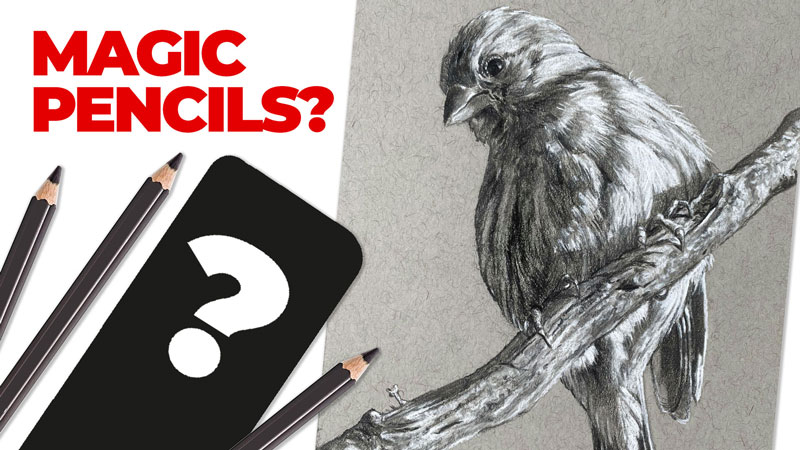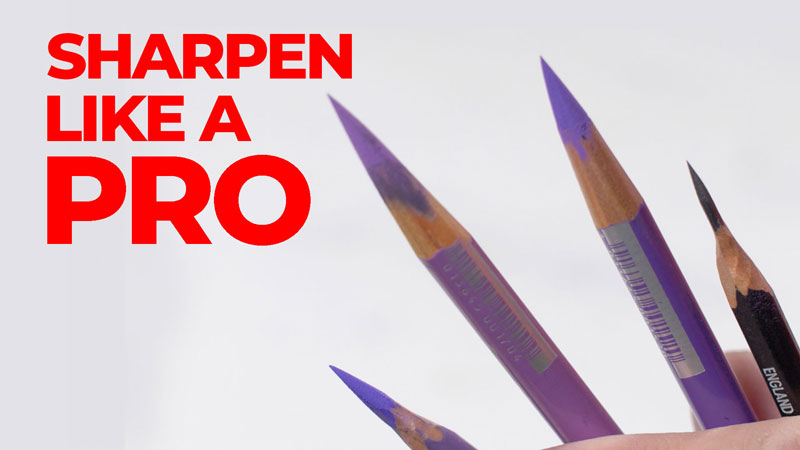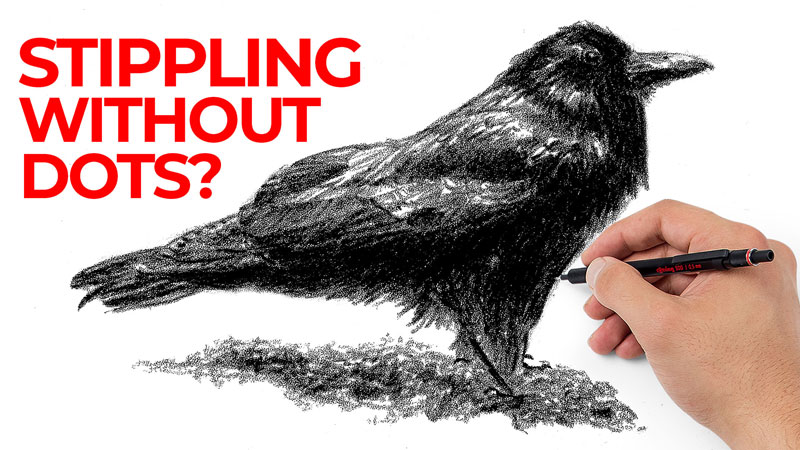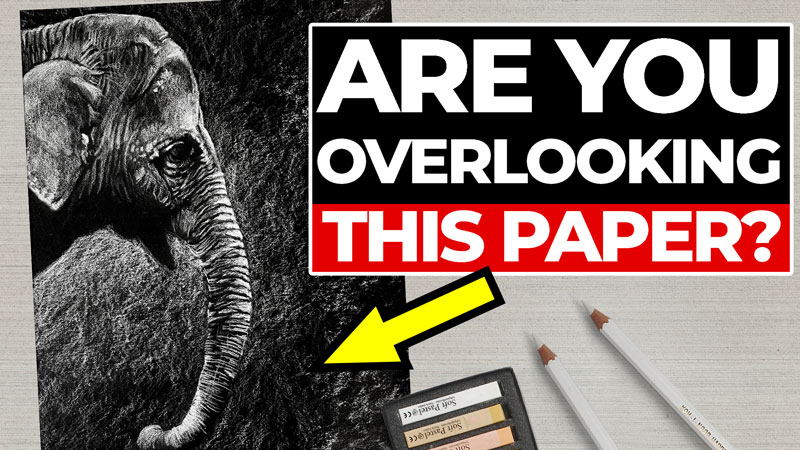Drawing a Skull with Charcoal
In this lesson, we’ll work on stipple paper by the Bee Paper Company and complete the drawing of a skull with charcoal. We’ll only use compressed charcoal pencils and sticks. This unique paper features a very unique surface that is heavily textured, which will be important in our final drawing.
Here’s a look at the completed drawing…
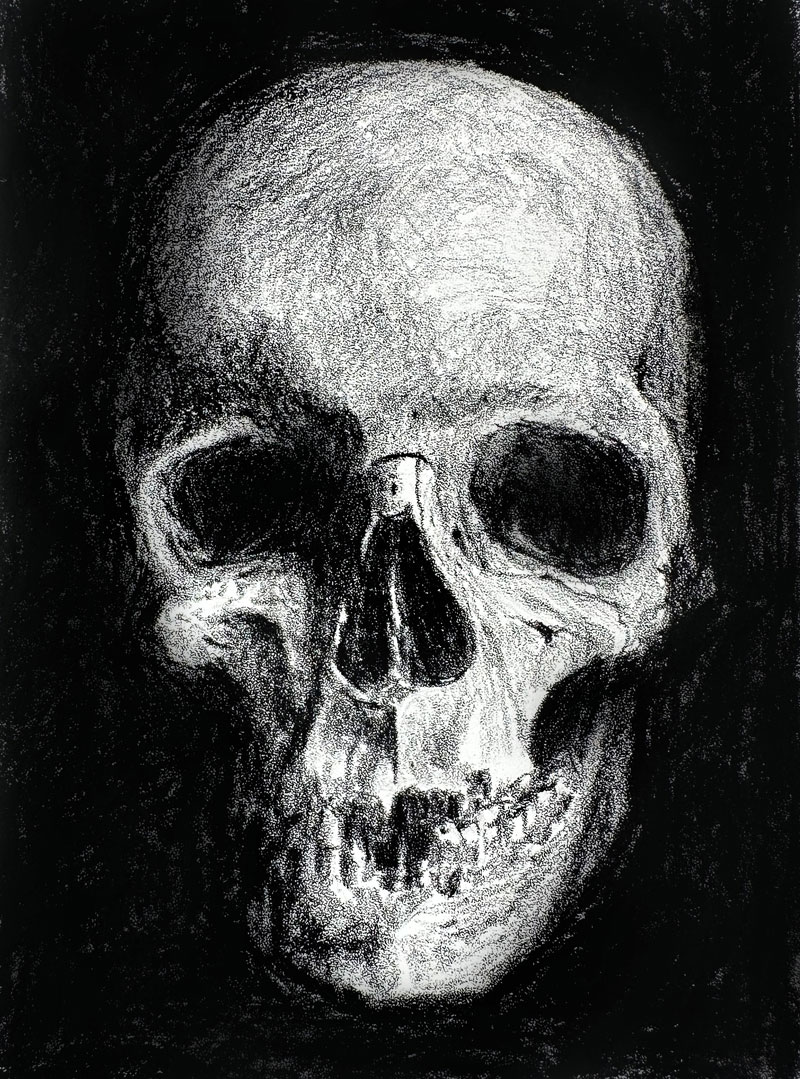
See also: How to Draw a Glass of Water with Graphite and Charcoal
Here’s a look at the photo reference…
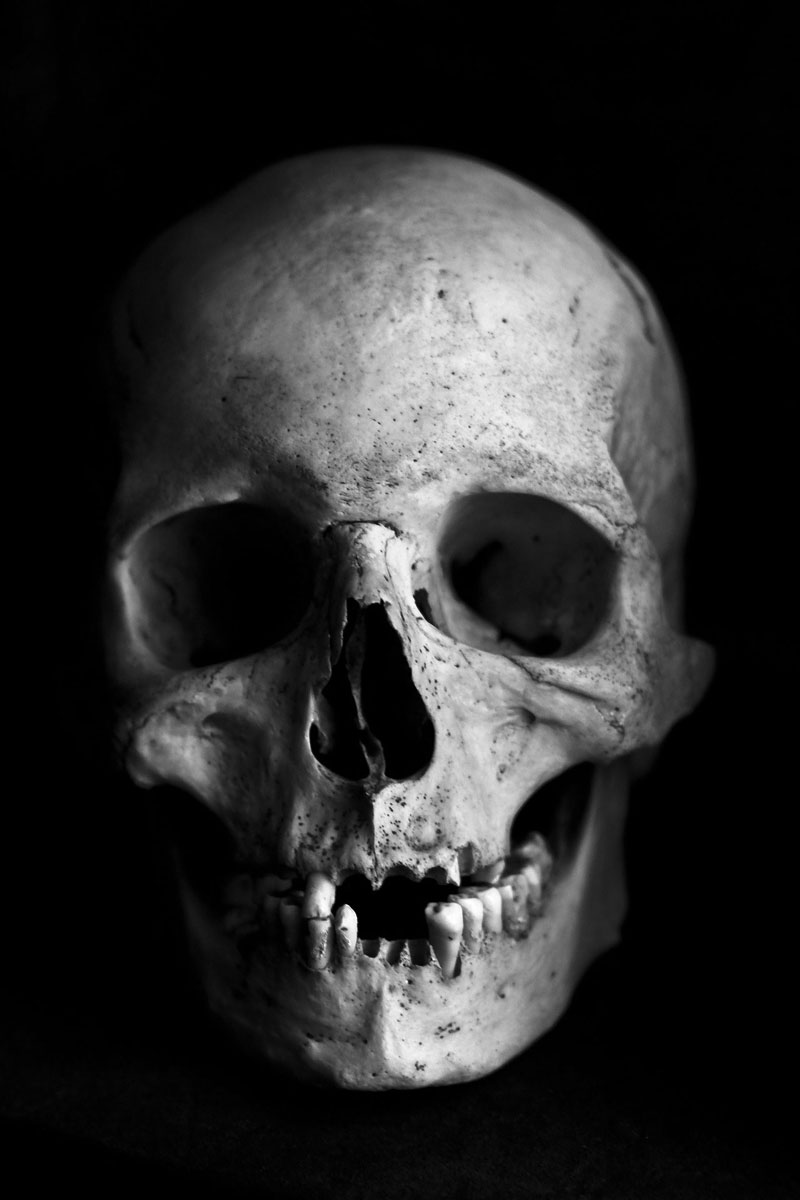
Graphite Pencil Sketch
We’ll begin the drawing with a HB graphite pencil. I want my marks to be visible, but I want them to be light. We begin by finding a location for the top of our skull and the bottom of our skull.
Then we find the areas where we see strong contrast. I draw lines where I see an edge or a difference in value between dark and light locations. Details are purposely left out. While I’m striving for accuracy, I’m also leaving myself open to some discrepancies between the photo reference and the drawing.
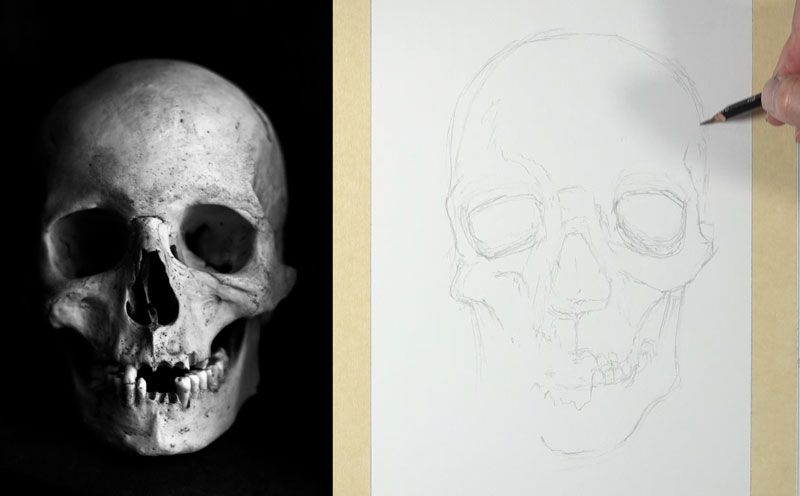
Shading with Charcoal
With my graphite sketch in place, I can switch over to a charcoal pencil for shading and texture. There is no blending or smudging, I’m just going to work with the texture of the paper.
I’m paying attention to the areas of highlight or the areas of lightest value. We want to leave these areas open as we’re adding the charcoal. You’ll also notice that I’m starting on the left side of the picture plane to work my way to the right and lower down the picture plane. I’m doing this simply to keep the palm of my hand out of the way of the drawing so I don’t smear any of the graphite that I’ve applied.
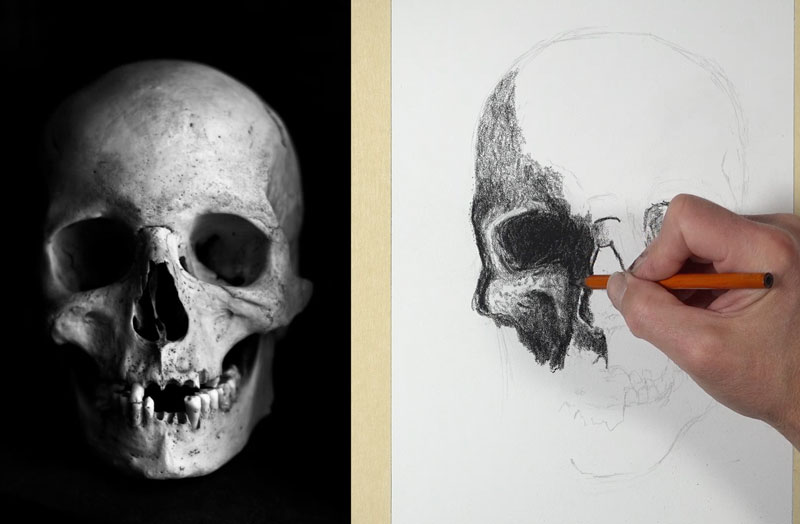
I’m going to go ahead and put a little bit of the dark value behind the back edge of the skull so that I have some contrast there. That will help me better evaluate the values as I add them to the drawing.
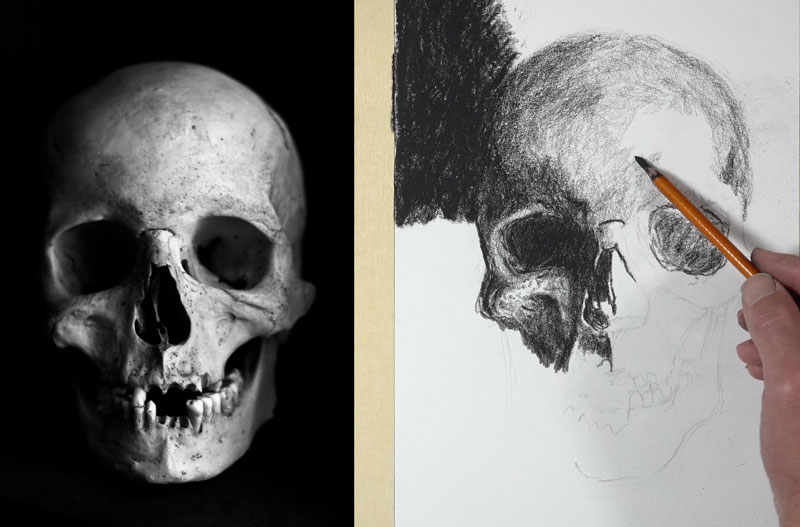
See also: Charcoal Drawing of a Skull in 45 Minutes
Working Down the Skull
As we continue to work our way down the picture plane, I’m going to add a little bit more of that dark background at the top. Then it’s back to the center part of the skull, working in one of the eye openings. In this eye opening on the right, we can see some subtle shifts of value inside. Since this sketch is loose and quick and since the surface dictates it, we’re not going to include all the details that we see. We just want an impression of the skull. We want a loose sketch, and this paper helps us to achieve that loose look.
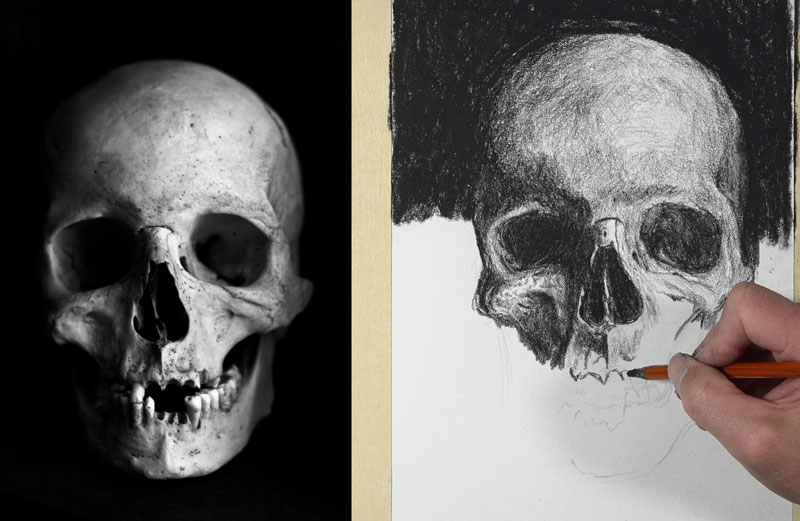
Our light source is originating from the right side of the picture plane. This means that all of the parts of the skull that stick out or protrude are going to be lighter on the right side compared to the left side. Even still, we still need to make some of the values on the right side a little bit darker, so instead of leaving them white, we’re going to create areas of gray. We just want to make sure that our value contrast is there so that we preserve the illusion of the light source in the final drawing.
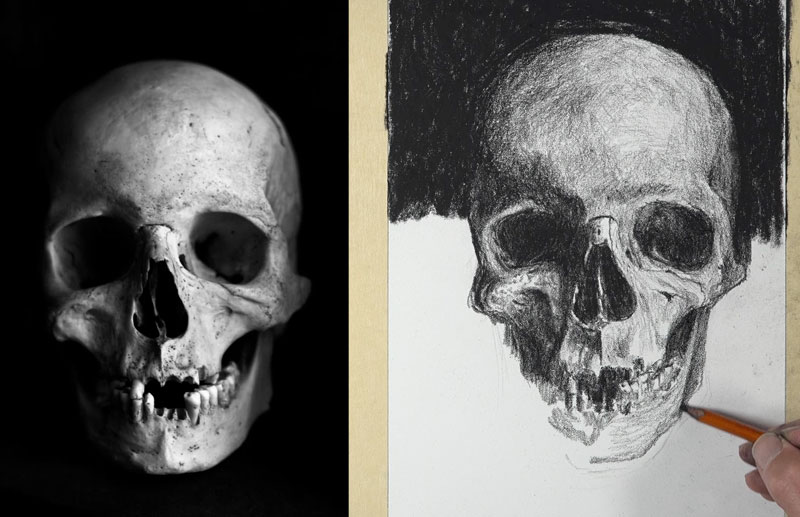
As we work down to the lower part of the skull and in the teeth section, I’m going to give an impression of the teeth, without defining all of the details. Since we only really clearly see the right side of the bottom of the jawbone, I’m only going to include a range of value here. On the left side, we’re going to focus mainly on the shadowed shapes that we see.
Finishing the Skull Drawing
Now we’ll finish the drawing by simply filling in the background with a heavy application of compressed charcoal.
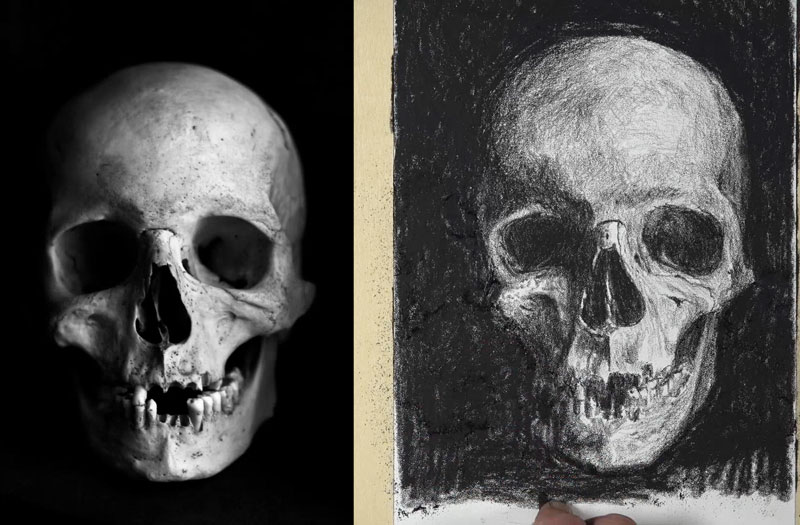
Now our drawing of a skull with charcoal is complete.
Spooky Skull Sketch – Conclusion
A skull is certainly a spooky subject, but it’s also a great subject for practicing drawing. Every skull is slightly different and the light can be dramatically different. This provides a nice challenge. Skulls have been the subject of countless artworks and is one of my favorite things to draw. I hope this lesson helps you draw your own skull.
If so, join over 36,000 others that receive our newsletter with new drawing and painting lessons. Plus, check out three of our course videos and ebooks for free.

